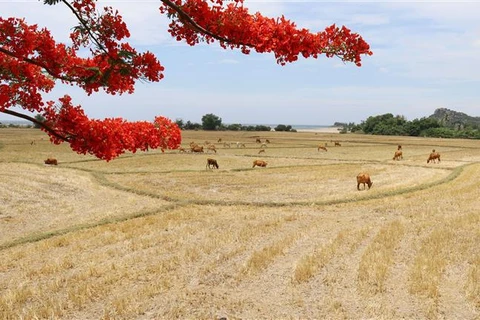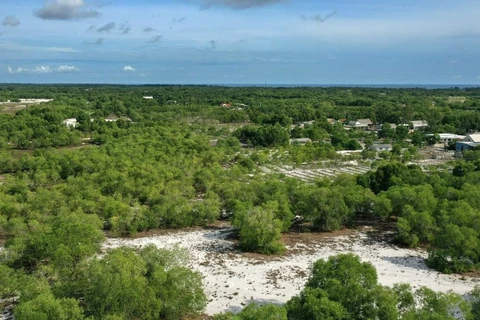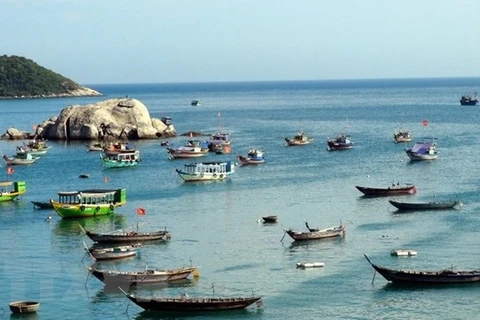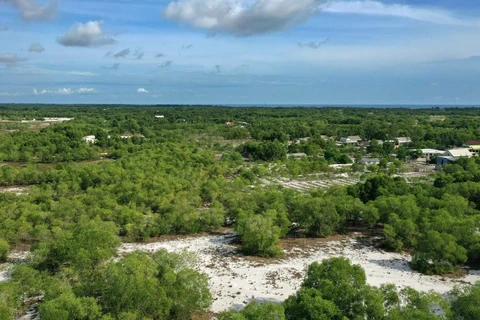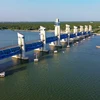 Kon Ha Nung Biosphere Reserve in Gia Lai province was added to the list of the World Network of Biosphere Reserves in 2021 (Photo: VNA)
Kon Ha Nung Biosphere Reserve in Gia Lai province was added to the list of the World Network of Biosphere Reserves in 2021 (Photo: VNA) Hanoi (VNA) – The Ministry of Natural Resources and Environment has announced the nine most significant environmental events in 2021 as followed:
1. Natural resources management and environmental protection a key task
Natural resources management and environmental protection has been defined one of the key tasks in the Resolution of the 13th National Party Congress, and an important topic of the Party and State’s high-level agenda.
2. Vietnam’s strong commitment at COP26
At the 2021 UN Climate Change Conference (COP26), Prime Minister Pham Minh Chinh announced Vietnam’s strong commitment to tackling climate change and transitioning to clean energy, opening up more opportunities for the country to gain broader access to knowledge, technology and financing. Vietnam pledged to achieve net-zero emissions by 2050, reduce methane emissions by 30 percent by 2030.
3. National Assembly adopts resolution on national land use planning for 2021 - 2030, with vision to 2050, and land use plan for 2021 - 2025
The resolution’s goal is to provide sufficient land for the consistent implementation of the country’s socio-economic development strategy for the 2021 - 2030 period and the socio-economic development plan for the 2021 - 2025 period from the grassroots to central levels. It sets to make sure that land allocations will not only be in line with the needs for socio-economic development but also take into account national defence and security, protection of the environment and ecosystem, climate change adaption. It targets to maintain 3.5 million hectares of rice farming areas and forest coverage at around 42 - 43 percent.
4. Party Central Committee’s Secretariat issues directive on hydrometeorology
On September 25, the Party Central Committee’s Secretariat issued Directive No.10-CT/TW on strengthening the Party’s leadership on hydrometeorology for national building and safeguarding in the new context.
5. Water management incorporated in master plans
This year, the Government approved a master plan on river basins and another on surveying water resources by 2030, with a vision towards 2050, together with several other projects. These are seen as tools to improve the effectiveness of use and management of the national water resources.
6. Promoting innovation, international integration to sustainably develop marine economy by 2030, with vision to 2045
On November 24, the Prime Minister issued Directive No.31/CT-TTg on promoting innovation and international integration to sustainably develop marine economy by 2030, with a vision to 2045, which aims to accelerate the implementation of Vietnam’s marine economy sustainably development strategy.
Earlier this year, Vietnam also announced the national report on status of marine environment and islands for the 2016 - 2020 period, which lays basis for solutions to preventing and minimise marine pollution and protect the marine environment.
7. Vietnam receives high-resolution imagery data from satellites SPOT-6 and 7
Vietnam has been allowed to receive high-resolution imagery data from France’s satellites SPOT-6 and 7, covering its entire land and maritime territory. It helps the country develop big database on remote sensing, strengthen management on natural resources, environment protection, natural disaster prevention and climate change response, and ensure security and defence.
8. Two Vietnamese sites recognised as new biosphere reserves by UNESCO
Nui Chua Biosphere Reserve in the coastal south-central province of Ninh Thuan and Kon Ha Nung Biosphere Reserve in the Central Highlands province of Gia Lai were added to the list of the World Network of Biosphere Reserves, which now has 727 names.
The 106.6-ha Nui Chua Biosphere Reserve encompasses the terrestrial and marine areas of Ninh Thuan and is located at the end of the Truong Son Mountain Range. The biosphere reserve is a representative area in terms of biodiversity with a rich and diverse mosaic of ecosystems characteristic of the south-central region of Vietnam, including unique semi-arid vegetation, sea turtle nesting beaches and coral reefs.
Kon Ha Nung Biosphere Reserve is home to rare species such as the Gray-shanked douc (Pygathrix cinerea) - a rare and endemic primate species of Vietnam and classified as critically endangered, with only about 1,000 individuals in the wild. The biosphere reserve is managed in line with the traditional knowledge of local communities including indigenous and folk knowledge about production and social organisation.
9. Can Tho awarded ASEAN Environmentally Sustainable City Award, two Vietnamese receives international environmental awards
Can Tho is the fifth city in Vietnam winning the ASEAN Environmentally Sustainable City Award. The Mekong Delta city received the honour during the 5th ASEAN Environmentally Sustainable City Award held in Indonesia in October. It was also awarded with an ASEAN Environmentally Sustainable City Certificate.
Nguyen Van Thai, the founder of the Save Vietnam’s Wildlife, won the 2021 Goldman Environmental Prize, one of the world's most presitgious honors for those working on environmental issues, for his outstanding efforts in protecting wild animals and biodiversity.
Dr. Nguyen Hoang Minh from the Ministry of Environment and Natural Resources was honoured by the World Meteorological Organisation (WMO) for his work to develop a method for improving the capability of a coupled meteorological and hydrological model for rainfall and flood forecasts by generating ensemble precipitation predictions (EPPs) associated with radar-based rainfall prediction by considering spatial rainfall errors./.
